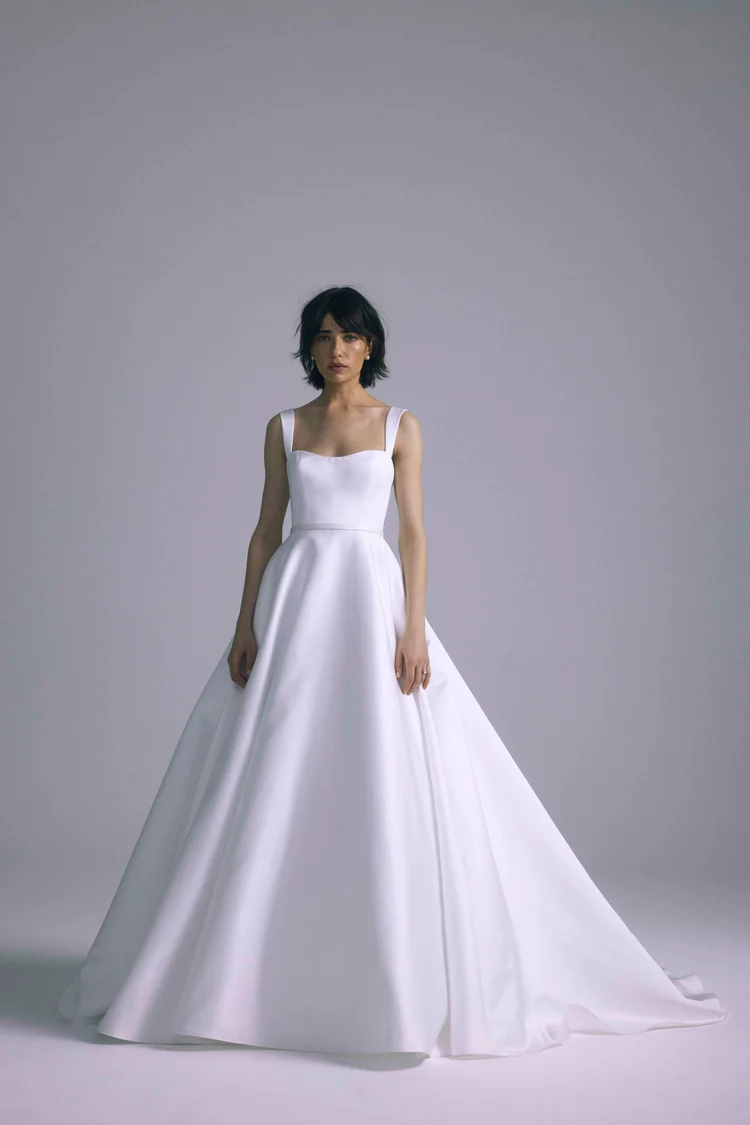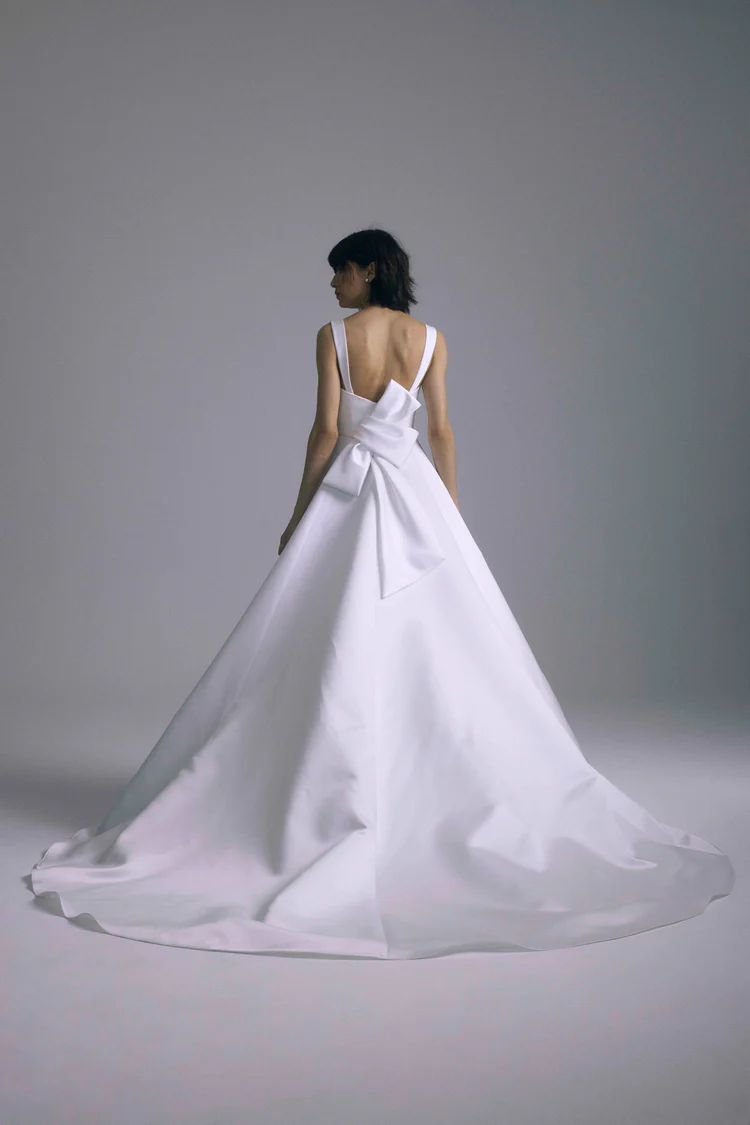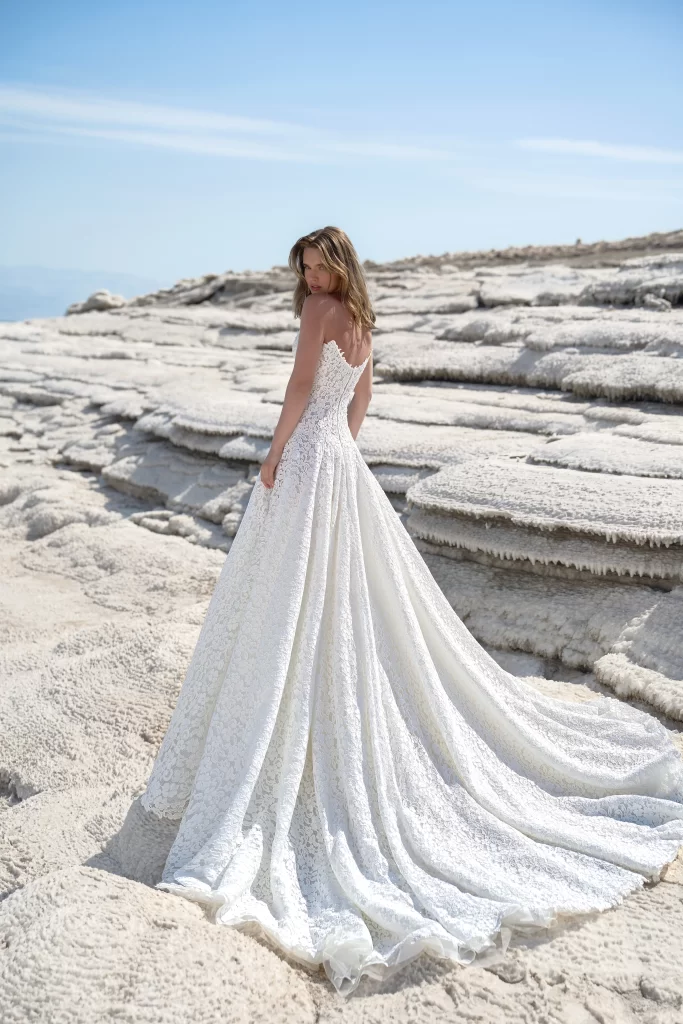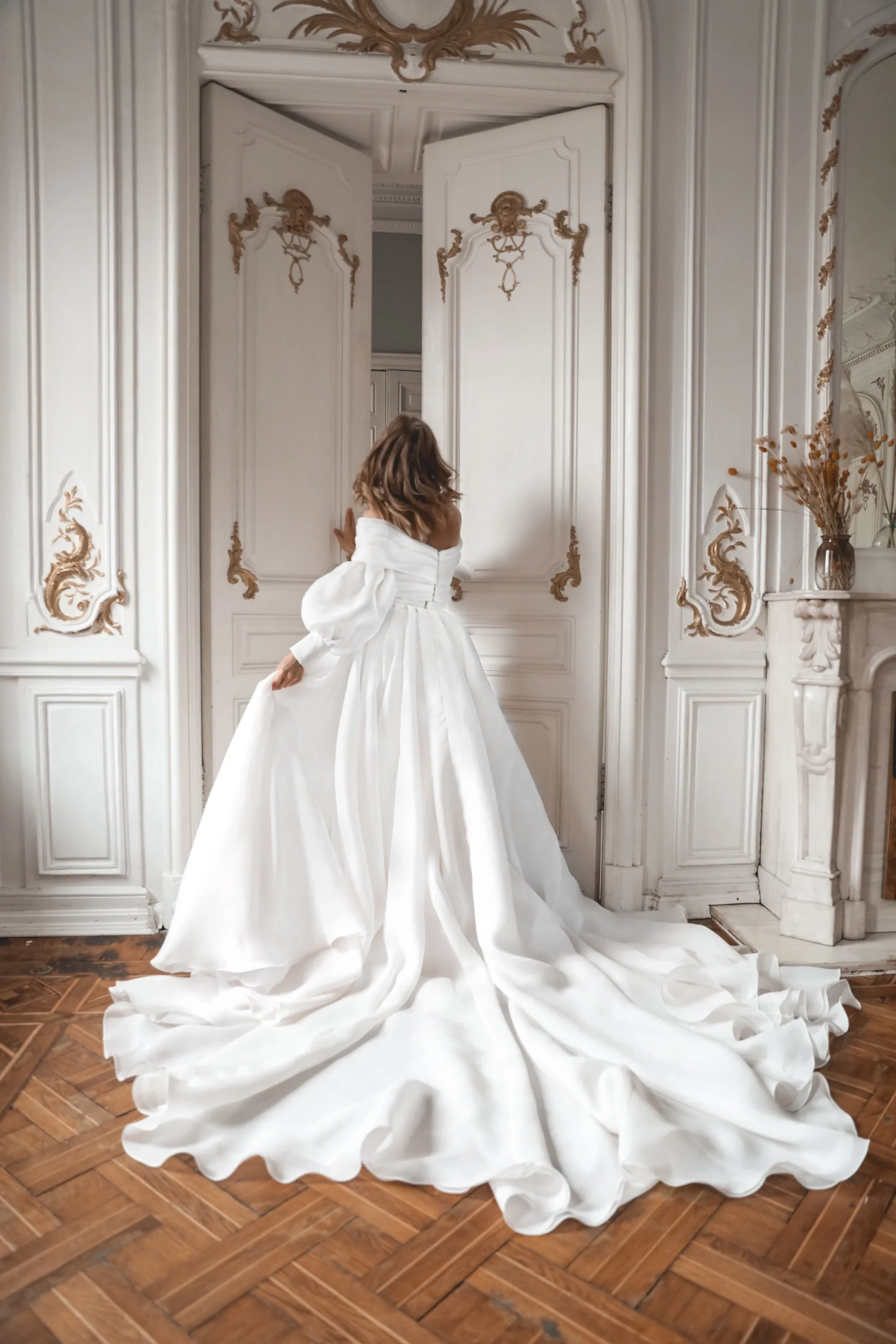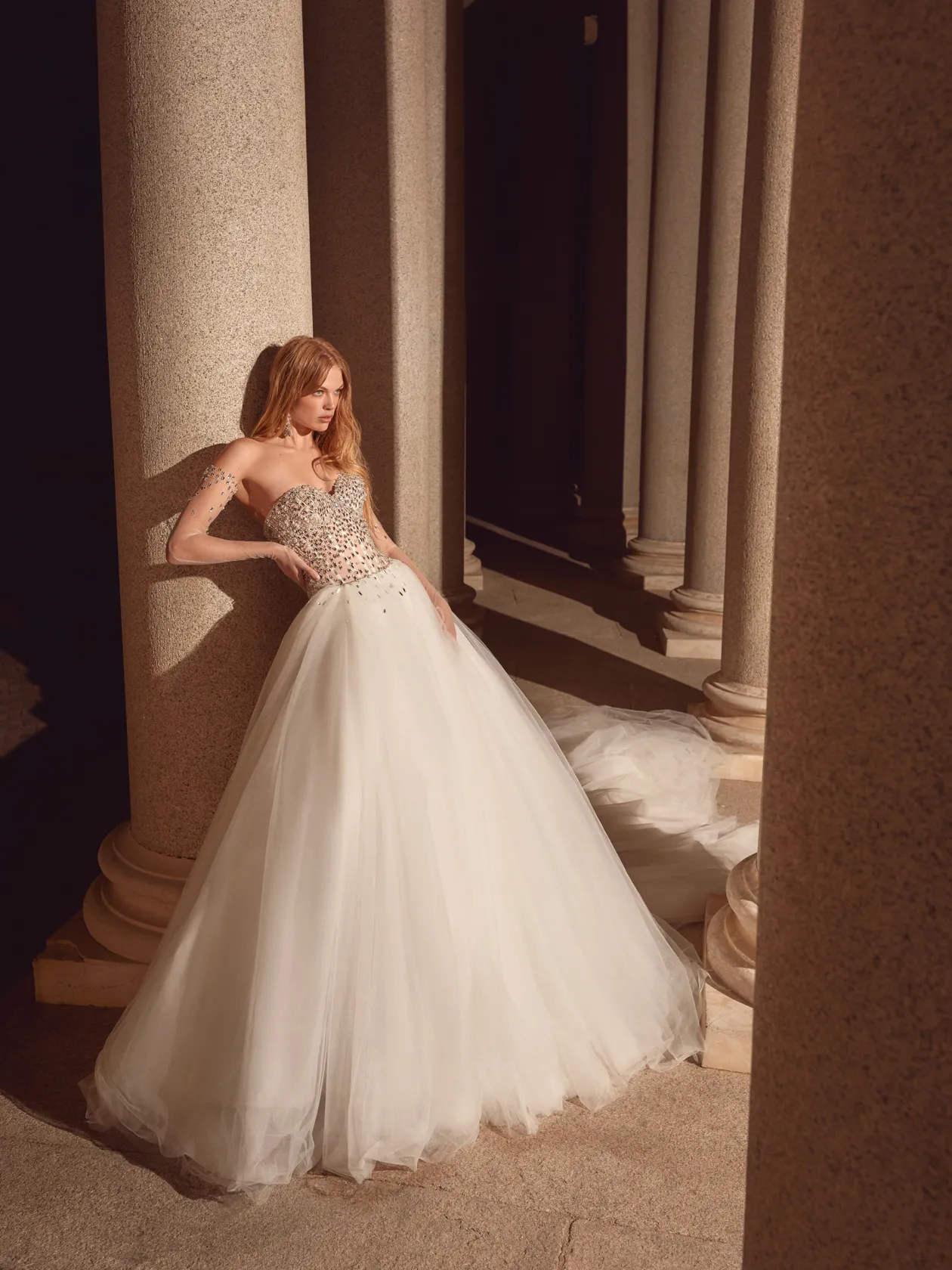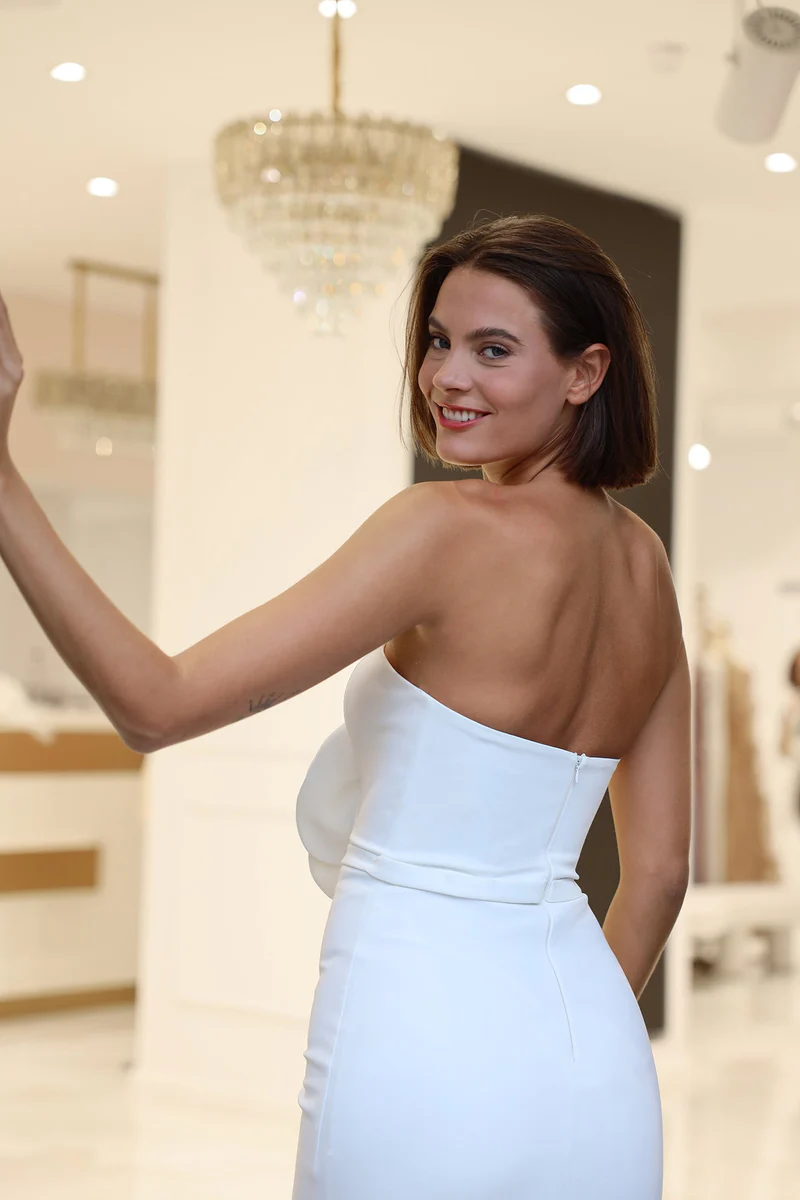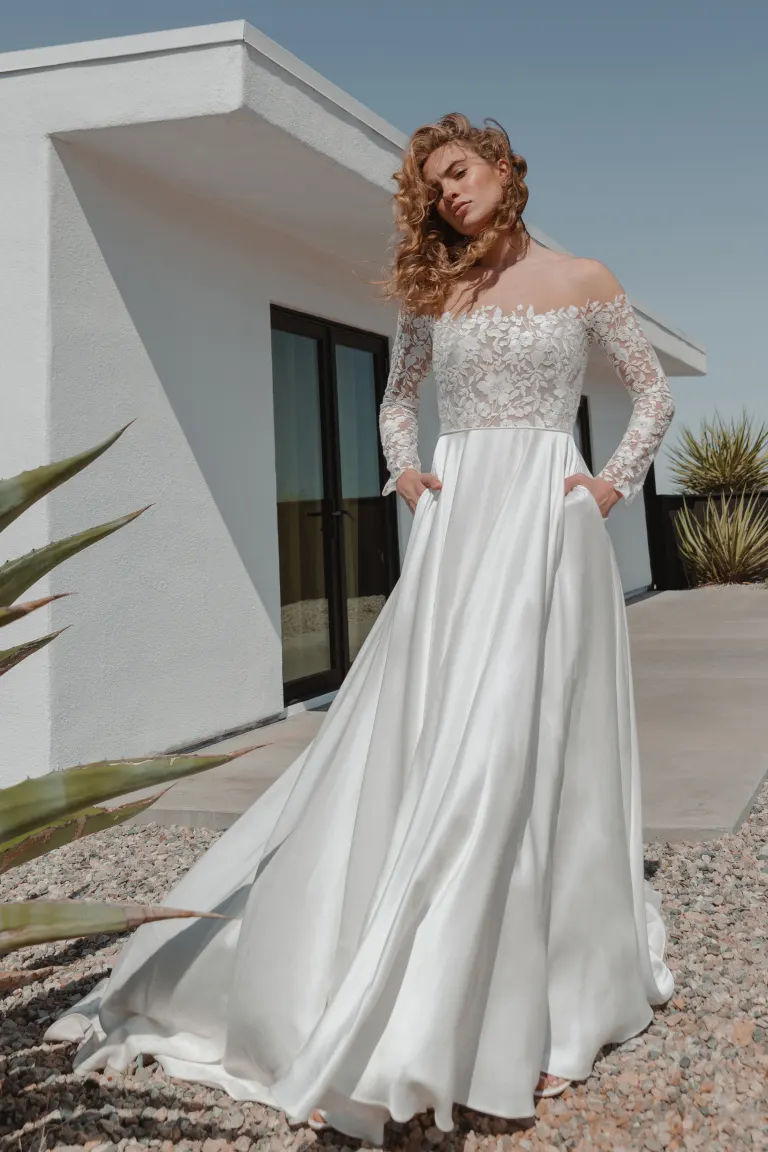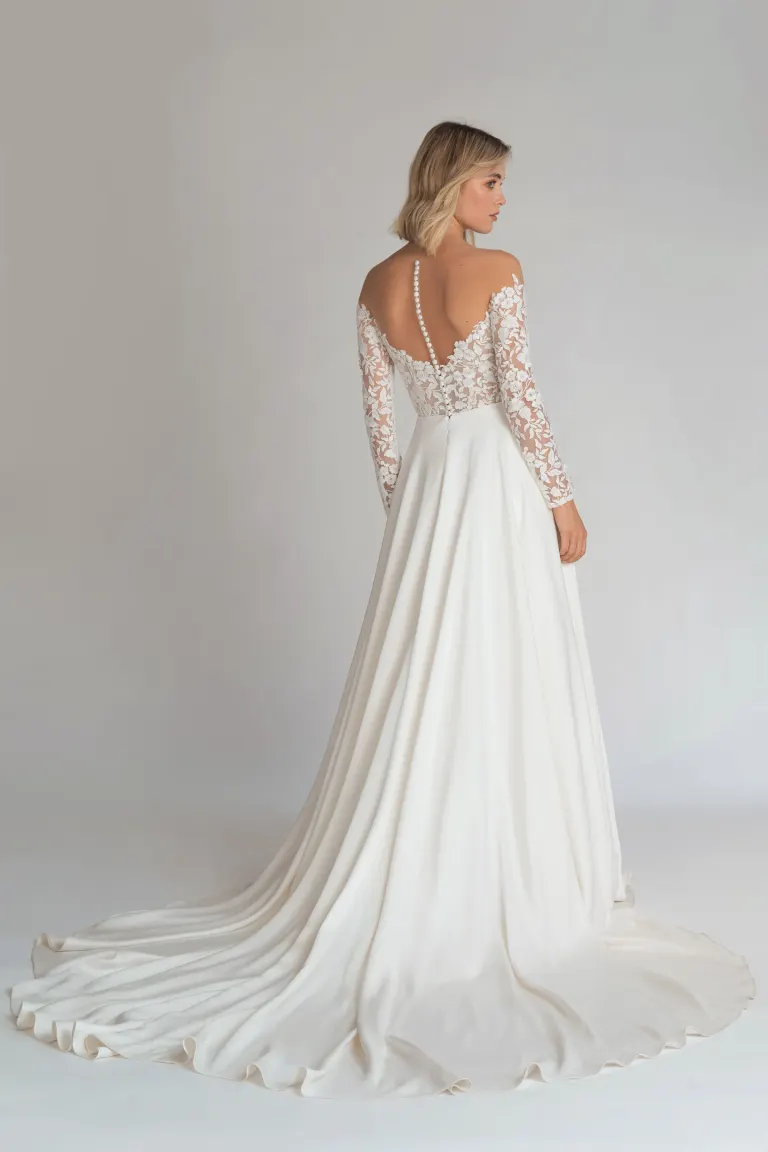White and ivory are two popular color options for wedding dresses, and while they may seem similar at first glance, there are distinct differences between the two. Let's delve into the details of the differences between white and ivory wedding dresses to help you make an informed decision for your special day.

Understanding the Basics: White vs. Ivory
First, it’s essential to understand the difference between white and ivory. White is a pure, stark shade, a classic color that’s synonymous with traditional bridal gowns. On the other hand, ivory, while still a shade of white, carries a subtle hint of cream or yellow, giving it a warmer tone. In most gowns, the lace is ivory - so we are mainly talking about underlay colors here! (The fabric layer right under the lace).
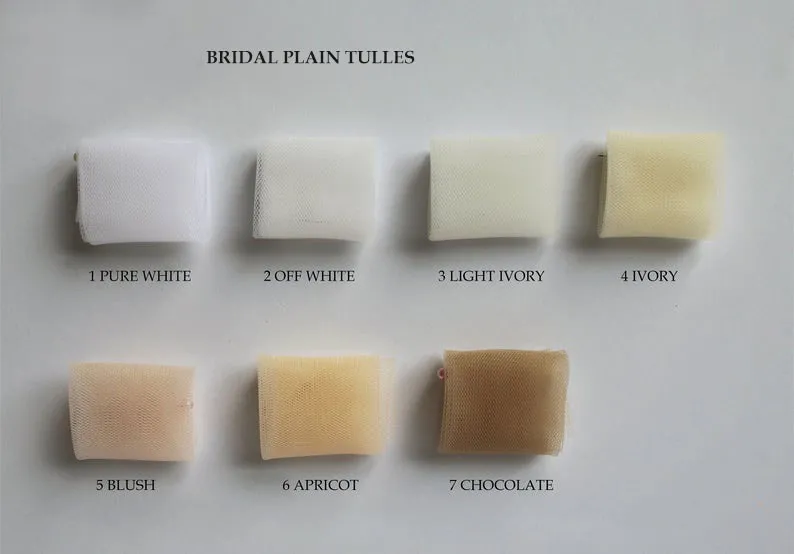
White wedding Dresses
White is the purest and brightest shade on the color spectrum. It is often associated with purity, innocence, and new beginnings. Labeled as the brightest white, stark white is typically bleached to get its crisp tint and is best achieved with synthetic fabrics, like satins, taffetas, and polyester blends. Both "pure white" and "stark white" are often used interchangeably to describe a very bright white wedding dress, pure white can make certain skin tones appear brighter and may work well for brides with cool or neutral undertones in their skin. It can also provide a stark contrast against darker skin tones, creating a striking visual impact. A stark white wedding gown often lends itself to a vintage feel, especially if combined with ornate beading.
Ivory Wedding Dress
While stark white can certainly be worn for all types of wedding celebrations, this shade has decreased in popularity over the last few years, as brides now favor more universally flattering shades, like natural white, ivory, and nude. Ivory is not cream or beige. Ivory is what you think of as white! Most wedding dresses you've seen are ivory - and maybe even darker than ivory. Many designers make their gowns in ivory but may call the color by a different name, like off-white or eggshell. Ivory lace with ivory underlay will give you that traditional bride feel, and no one will question that your dress isn't "white".
The Impact on Your Wedding Photos
When considering how different colors photograph, there are a few key points to keep in mind. White gowns reflect more light, resulting in a bright, crisp appearance in photos. They stand out against nearly any backdrop, ensuring you are the focal point of the images. White wedding dresses typically have cool undertones, meaning they may have a slightly bluish hue. The high reflectivity of white can sometimes cause a loss of detail in the gown's design elements, especially under brighter lighting conditions.
Ivory gowns, on the other hand, absorb more light, creating a softer look in photographs. This quality can enhance the intricate details of the dress, making lacework, beadwork, and other embellishments more pronounced. The warmer tones of ivory can also complement a variety of skin tones, providing a flattering glow, particularly in portraits.
Complementing Your Wedding Aesthetic
Another factor to consider is how the color of your dress aligns with your overall wedding aesthetic. White gowns are perfect for modern, minimalist, or glamorous themes, providing a clean and striking appearance. On the other hand, ivory gowns can beautifully complement rustic, vintage, or bohemian wedding styles, adding to a warm and romantic ambiance. Remember, there are no strict rules when it comes to choosing your dress. Your wedding should reflect your taste and style.
Factoring in Your Skin Tone
Your skin tone is another crucial factor when deciding between a white vs. ivory wedding dress. While white gowns can be striking, they may create a harsh contrast on some skin tones, making the skin appear washed out in photos. Conversely, ivory can add a warm glow to many skin tones, providing a flattering and natural look in images.
So take the time to try on dresses in both colors to see which one complements your vision and style the best. Ivory is typically the most universally flattering version of white. When in doubt, go ivory!

